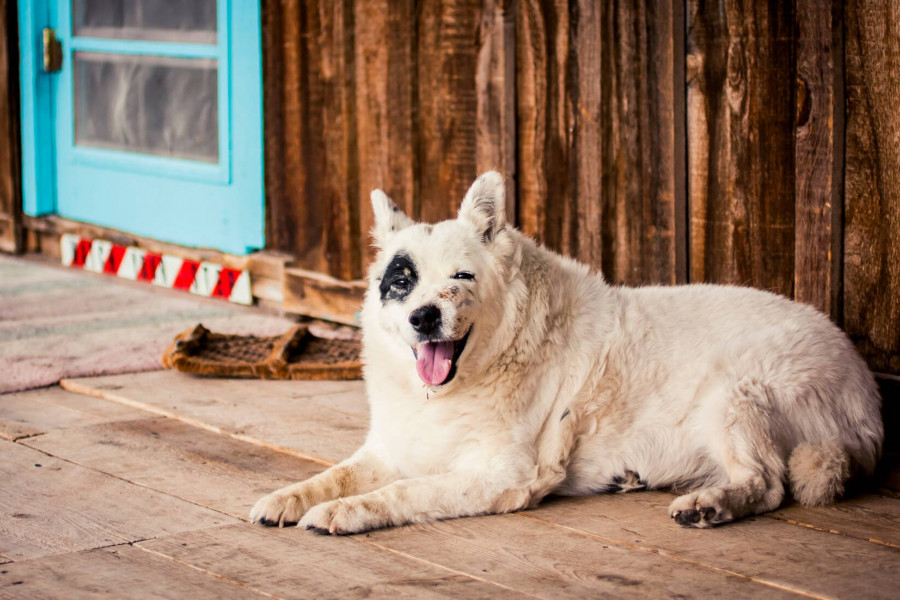5 Common Signs Your Aging Dog Needs To Go To The Vet

We all want to give our dogs the best care possible, but we also don’t want to spend money at the vet for no reason. As our dogs age, it can become stressful to answer the question, “Does my senior dog need to see a vet?” Dogs, especially seniors, can have off days where they don’t feel good – maybe they played too long yesterday and are sore and tired today. Take it easy, and tomorrow they will be fine, no vet needed. But other times, your aging dog’s change in behavior could mean something serious. While it’s always an individual judgement call, here are some common signs that your aging dog should go to the vet.
#1 – Sudden Weight Loss or Weight Gain
If you haven’t changed your dog’s diet or exercise habits, and all of a sudden, he has dropped a lot of weight or gained it, he could have a health condition such as Cushing’s or thyroid, or even something as simple as a parasite, like worms. It’s a good idea to take her to the vet to find out what’s causing the loss or gain.
#2 – Change in Appetite
This symptom may be seen in conjunction with the above weight loss or weight gain. Your dog may seem uninterested in food or is now acting like he is starving all the time. Again, if you haven’t changed his diet, this could be a sign of any number of senior dog health issues, including cancer and thyroid trouble, so it’s a good idea to take him to the vet for a once over.
#3 – Change in Fur
A change in fur quality can be caused from a diet change or from a grooming product, so think about whether you have changed your dog’s diet, shampoo, conditioners, or detanglers in the last two months before heading to the vet. But, hair loss or dry, brittle hair can be caused by several deteriorating health conditions, including thyroid and Cushing diseases, so if you don’t think diet or grooming products is the culprit, it’s time to visit the vet.
#4 – Having Trouble Getting Around
As dogs age, their joints and muscles can get weaker or a bit arthritic, just like ours. It’s normal for your senior dog to slow down and not be as spry as she was a puppy. And of course, if she is overweight, that can cause her to have more trouble (simple solution – keep your dog at a healthy weight and remember to continue to exercise your senior dog, as it’s better for their joints. Just remember she may not be able to handle as much exercise as she did when she was younger). But if your notice your dog cannot get up from lying down or sitting without great difficult, or appears to have weakness in the hind end, is whining or yelping in pain when trying to move, it’s a good idea to take her to the vet. They may have severe arthritis that requires pain relief medication or they may have something else going on such as hip dysplasia.
#5 – Lumps
Most dogs get lumps as they age. Many of them get “fatty tumors,” which can be any size – from small or quite large and noticeable. These tumors are soft and easy to manipulate when felt and are almost always benign. You can usually ignore them unless they start to grow rapidly, or are in a location that hinders your dog (for example a large one on a joint may make it hard for your dog to walk), or are so big its become a hinderance. However, if the tumor is hard, not moveable under the skin, it should be checked out by a vet as it could be malignant. It is important to note that fatty tumors can sometimes become cancerous, so keep an eye on them, and ask your vet if you are concerned.
At the end of the day, remember you know your dog best. Even if his symptoms are not on this list, if you feel he needs to see a vet, do it. Listen to that voice inside you, it’s usually right. You can also try call your vet and explain the symptoms your dog is showing, and they may be able to help you decide if he needs to be seen in person.
